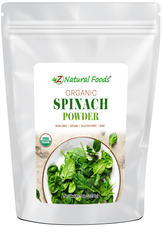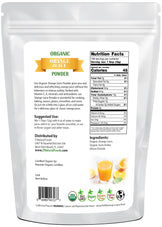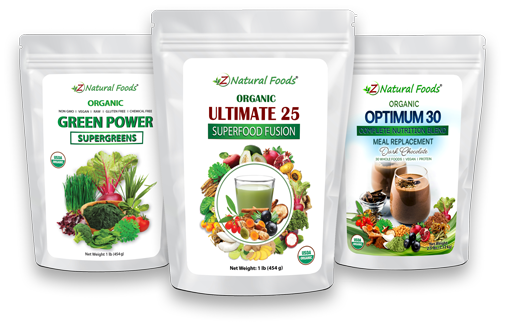Description
Description
The idea that we can’t preserve and store food healthily and properly without using additives and harmful chemicals is simply untrue.
As we have mentioned in many of our previous articles,
Powdered functional superfoods are tremendously versatile, unlimitedly able to create new and exciting products, and have unique advantages over the fresh version of those foods.
One of the essential topics we haven’t dug into is their advantages based on the extended shelf life and what those factors bring to the table.
Storage and Shelf-life for Powdered Functional Foods
So, today, we will discuss the various aspects of storage and shelf life for powered functional foods and the primary factors that create an end product with such versatile capabilities.
Before we begin, we must state the following essential facts about long-term food storage and using products past expiration dates:
- We understand that people choose to use products past their expiration date, but we at Z Natural Foods do not encourage or recommend this practice. There are too many factors to consider for the safety of the individual and food, so we can not specifically ensure this won’t pose an immediate or long-term health risk. Therefore, it is at your own risk if you choose to use any product past its expiration date.
- Once the package has been opened after being stored for an extended period, if there is a significant difference in odor, taste, or texture error on the safety side, DO NOT use the product.
- Using egg, meat, and dairy-based powders past their expiration dates is not ever recommended because these specific foods may pose a significant health risk. Please remember that health risks from expired egg, meat, and dairy-based foods may not always show an immediate onset.
- If you have any preexisting health or digestive issues, always error on the side of caution and do not use expired powdered food products.
- We were given senses like smell, vision, taste, and, most importantly, gut sense. So, remember the golden rule: When in doubt, throw it out.
In order to discuss this topic, it is vital to understand one of the most important processes that ultimately determine a powdered food's shelf life: the drying process. It is no secret that air and moisture are powdered food’s greatest enemies.
As stated above, thanks to modern technology in food preservation, we can extend the shelf life of food without adding preservatives and chemicals and create a more versatile end product that is as highly nutrient-dense as the fresh version.
While there are many natural ways to dry foods and preserve their nutritional qualities, including shade, low temperature, and sun drying, the three most predominant are air, spray, and freeze-drying. However, it is essential to note two critical points:
Unlike many other food preservation practices, where something unhealthy is added, freeze-drying, spray-drying, and air-drying are all about what is removed: the water, which is one of the main factors determining the shelf life of any food.
A freeze-dried product has an average of only 3% or less moisture content, an air-dried product has an average of only 5% or less, and a spray-dried product averages up to 1% moisture content.
Therefore, all of these drying processes allow for more accessible storage options and blending capability, as well as supporting the natural flavor profile of the fresh food version. Please remember that depending on the process, there may be a slight change of color and taste when the water is removed.
The following was concluded in an article, Nutrient-Dense Shelf-Stable Vegetable Powders and Extruded Snacks Made from Carrots and Broccoli:
- Broccoli and carrot pomace powders were richer in fiber but had lower levels of total carbohydrates than the corresponding whole-vegetable powders.
- Using powder instead of fresh vegetable ingredients can enhance the nutritional properties of extruded snacks by allowing more vegetable solids to be incorporated into the snack.
- Providing vegetable powders and extruded snacks high in vegetable content in a convenient shelf-stable format increases the vegetable product offering for consumers, increasing consumer choice and vegetable consumption.
- The production of shelf-stable vegetable powders and products will also reduce the amount of second-grade vegetables and by-products from juicing discarded as food waste.
There are six primary advantages to creating a powered food using these methods:
- They create the closest end product when presenting a whole food complex.
- They create a food product closest to the smell, taste, and texture of the fresh version of a food.
- They allow you to customize your needs when creating a product. For example, freeze and air-dried foods can be left whole, chopped, or milled into a powder, all of which will still offer the nutritional value that comes from the fresh version.
- Air-drying specific foods like apples better retain cellular texture and create a better mouthfeel.
- The end product allows for greater versatility.
- Low heat filtration allows for the creation of a food product that those with specific food intolerances may otherwise use.
How does the fat content in powdered food affect its shelf life?
Powders containing a high percentage of specifically unsaturated fats seem to be more susceptible to oxidative rancidity and change in flavor because saturated fatty acids oxidize slower.
Therefore, the presence of high levels of unsaturated fatty acids will increase the oxidation of the product.
Proper storage: What does it really mean?
When powdered functional food is made and stored correctly and unopened, it can have a shelf life from three months to two years and, in some cases, even longer.
For example, when stored properly, our whole milk or butter powder may last up to two years.
It is a good rule of thumb not to refrigerate or freeze unopened powdered foods, which may affect the product's long-term quality and moisture content.
What does it mean to store powdered functional food properly, and what factors play a role in obtaining the best results?
While the FDA has specific guidelines for storing food in various forms, four primary factors are significant regarding powdered foods. To get the most bang for your buck, you should consider the importance of temperature, moisture levels, and lighting when storing powdered foods.
In simple terms, store them in a cool (50 to 70 degrees Fahrenheit), dark, and dry place.
The fourth factor is the type of packaging the powdered food is stored in, which makes all the difference regarding moisture and protection from light.
An outstanding choice is using a polyethylene terephthalate with aluminum and a linear low-density sealant layer storage vessel that is FDA-approved for contact with food. This is what Z Natural Foods uses.
This type of storage vessel is excellent for maintaining powdered food's moisture and temperature levels in its original form.
Once you take your products out of storage and begin using them, it is crucial to understand what you can do at home to extend the shelf life of an open product. Once you break the seal, the powder is exposed to air, light, and moisture, and there is no way to determine precisely how long the product will last if you are using a product past close to or past the expiration date.
Therefore, it is essential to do the following to help extend the life of your products:
- Use clean and dry utensils when removing products from the bag, and don’t use the same spoon or scoop for more than one product. This helps prevent moisture and cross-contamination. It is best to dedicate specific utensils to only your powdered foods and use them for nothing else.
- If you don’t have a vacuum sealing machine at home, push out as much air as possible before resealing the bag because, as mentioned above, exposure to moisture and air are powdered food’s biggest enemy.
- Always keep the zipper portion of the storage bag clean and free of debris. Gently use a clean stainless steel toothpick to clean it out. This process helps ensure you can adequately reseal the bag.
- Before resealing the pouch, wipe the zipper portion with a clean, dry cloth to help ensure no moisture is present. Remember, the goal is not to grow mushrooms.
Finally, if you want to build a reserve or long-term storage of powdered foods, keeping some essential fresh or dried herbs on hand is a good idea.
For more information about building a reserve or long-term storage, visit this helpful article:
Why our powdered foods are excellent for long-term storage, outdoor adventures, and emergencies
Specific fresh or freeze-dried herbs like thyme, oregano, rosemary, and cinnamon contain essential oil compounds that may help naturally preserve foods, prevent mold and fungal growth, and support healthy digestion.
In conclusion, in our current times, with more extreme weather events, the possibility of being trapped in the middle of nowhere, and the lack of modern conveniences in those situations, being prepared and more self-sufficient is a good idea.
We understand that you want something easy to use, highly nourishing, and a simple solution to what otherwise may be a complex issue. Therefore, preparing a functional food kit with essential ingredients can assure you that you will get the nourishment you need in times of disaster.
For more information about our popular powdered foods, go here:





























































































